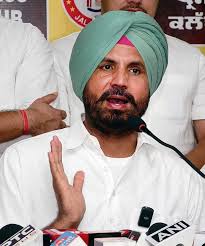The Punjab civic polls have reshaped the state’s political landscape, offering food for thought to major parties. While AAP’s significant gains signal progress, its struggles in key regions highlight vulnerabilities, offering Congress an opportunity to reclaim prominence. A report by Aayush Goel

The recently concluded Punjab civic polls have fluttered the political scenario in the state leaving all major political parties to introspect and draw lessons. The elections in the state were held for five municipal corporations and 41 municipal councils and nagar panchayats.
The results have put the key spotlight on the ruling Aam Aadmi Party (AAP) which has managed to grab 55 percent of seats but is far from a clear winner. The popular opinion calls the party’s performance poor, having secured a clear-cut majority in only one corporation out of five. The party however puts up a brave face calling results a historic leap and a significant milestone from zero percent in the last elections to 55 percent.
AAP won Patiala Municipal Corporation, emerged as the single largest party in Ludhiana and Jalandhar municipal corporations, but witnessed subdued performance in Amritsar and Phagwara municipal corporations. Congress won Amritsar Municipal Corporation and emerged as the single largest party in Phagwara.
Punjab AAP President Aman Arora claimed that the party is now officially the ‘No. 1 party’ in Punjab’s urban areas. “We have shattered the illusion that the BJP and Congress are the strongest parties in urban areas. In this election, AAP won more than 55 percent of the seats. Together, SAD-BJP and Congress could not even secure 45 percent,” said Arora.
AAP is celebrating a ‘crushing’ defeat of the BJP and Shiromani Akali Dal (SAD). The BJP won merely 7 percent of the seats, with 69 of its candidates emerging victorious.
Similarly, SAD managed to win only 3 percent of the seats, with just 31 of its candidates securing victory. BSP had 5 winners and could secure victory in only 0.5 percent of the seats. The number of independent candidates who won stood at 143, and their victory percentage was approximately 15 percent. While AAP managed to maintain its footing in some areas, the results have exposed its vulnerabilities and challenge to tap Punjab’s urban centres.
CM suffers setback at home turf
Though AAP clinched Patiala with a decisive win while emerging as the single largest party in Ludhiana and Jalandhar, but fell short of a majority in key regions, bringing its urban appeal under question. The polls in Patiala were marred by controversy after the Punjab and Haryana High Court reprimanded the state government over alleged irregularities, including a viral video of a BJP candidate’s nomination papers being snatched. As a result, elections in seven of the city’s 60 wards were deferred. AAP managed to secure 35 of the 45 contested wards, including eight unopposed victories, ensuring a clear majority.
A major setback in this civic election has been AAP’s failure to secure a majority in the Sangrur municipal council. AAP secured only seven of the 29 wards in Sangrur, trailing behind the Congress with nine and Independents backed by SAD.
This is the second consecutive defeat after the Barnala assembly by-poll in its political capital, the home district of Chief Minister Bhagwant Mann, AAP Punjab president Aman Arora and State Finance Minister Harpal Cheema. In Ludhiana though, AAP emerged as the largest party with 41 of the 95 wards followed by Congress with 30. The losses of Sukhchain Kaur Gogi and Meenu Parashar, wives of prominent AAP MLAs, have brought the party’s influence under scanner.
Resurrection of Congress
Having dented AAP’s prospects in many of its strongholds, the Punjab Congress is celebrating “Tilting of scales in favor of the Congress in the run-up to the 2027 Assembly poll.” The Congress found success in Amritsar, securing 43 of the 85 seats to become the largest party, while AAP managed only 24. Jalandhar witnessed a tight contest, with AAP falling short of a majority by securing 39 of the 85 seats, while Congress trailed with 34. In Phagwara, a hung verdict emerged as Congress, in alliance with BSP, became the largest bloc but lacked a clear majority. Pradesh Congress Committee (PCC) chief Amrinder Singh Raja Warring said that Punjabis voted against the misgovernance of the AAP government.

“Despite the abuse of government machinery by AAP, the Congress managed around 60 percent of seats in the panchayat elections and has shown good performance in civic polls. The people had opted for the Congress instead of the BJP in urban civic bodies, In Ludhiana, the Congress-led BJP in five constituencies with a margin of 51,000 votes, significantly improving its position compared to the 2024 General Elections where the party trailed by 49,000 votes,” said Warring.
The Leader of the Opposition, Partap Singh Bajwa said, “AAP has not won any poll. They have stolen results by using brute force. AAP won seats by misusing government machinery, police force and goons to stop voters from exercising their franchise.”
BJP, SAD lackluster
For the first time in nearly three decades, the erstwhile allies in Punjab, SAD and BJP contested separately in the civic body polls and their performance was lackluster. Between the two, BJP managed to fare better signaling its gradual entry into semi-rural areas of the state.
The SAD, whose vote bank is mainly based in the rural belts, faced a severe setback in these polls. Many of the SAD’s candidates contested as Independents without its poll symbol. They feared a backlash from people because of the party’s turmoil amid religious punishment awarded to its leadership by the Akal Takht, the highest temporal seat of Sikhs.
In the elections to five municipal corporations, the BJP won 55 of 319 wards it contested (17.2% success rate), while the SAD won just 11 of 213 wards it contested (5.1% success rate). Of 95 wards in the Ludhiana Municipal Corporation, Punjab’s biggest civic body, the BJP contested 90 wards and won 19. The high point for the party was when its candidate Poonam Ratra defeated Meenu Prashar, wife of local AAP MLA Ashok Prashar Pappi, in ward no. 77 by 574 votes. SAD could win only 2 after contesting 78 wards. In Patiala, the home turf of former CM and now a senior BJP leader Captain Amarinder Singh, the BJP contested 25 of 53 seats but could win only four. In Jalandhar, the BJP won 19 of 83 wards it contested, as compared to 8 it had won in 2017. The SAD contested 31 wards but drew a blank. In Phagwara, the BJP contested 37 of 50 wards, winning 4, while the SAD won 3 of the 9 it contested. In the Amritsar civic body polls, the BJP fought 84 of 85 wards, winning 9, while the SAD won 4 of 69 it contested. Facing brickbats from both Congress and AAP, the BJP calls the results “satisfactory’.
“In the previous polls too, we were in the Opposition, but we were in alliance with SAD. However, our individual performance has improved a lot now. In Lok Sabha, we had performed well in all the municipal corporations but then, people voted differently in Lok Sabha and civic polls. The BJP’s slow penetration into semi-rural areas is evident”, said the state BJP general secretary Anil Sarin. SAD leader Parambans Bunty Rumana said, “We had left it to the local leadership to decide. And at many places our candidates contested as independents but people knew they were Akalis”.












